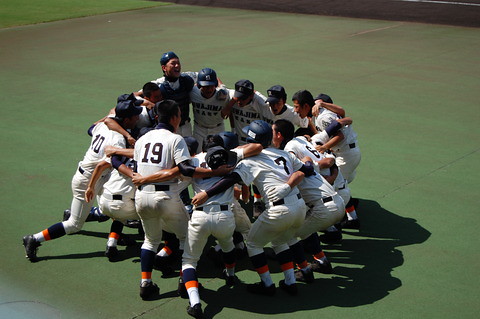Education in Japan (Natalie Collar)
For many children in Japan, the end of elementary school is no sad affair. Sure, they will have to start wearing uniforms and will certainly have to study harder upon entering junior high school, but these unfavorable truths are usually masked by the novelty of extracurricular activities. Some may wonder just how the anticipation of entering junior high school is created, but it becomes clear when one considers a very special field trip 6th grade students take.
It is traditional for junior high schools to invite sixth grade students from feeder schools to experience a day in the life of a middle school student. As a part of this experience, students, and parents who choose to attend, observe various classes, get a tour of the school, and are welcomed to join club activities after school. Many students leave these visits with less uncertainty and more anticipation than they arrived with, and they can hardly contain their excitement for the beginning of junior high school.
From sports to arts and music, junior high school students have the choice to join a variety of clubs. Although schools in other countries allow their students to participate in multiple activities throughout the school year, students in Japan are typically restricted to choosing one and only one club to join throughout the three years of junior high school. While western countries may look down on this limitation—most schools in the United States allow students to participate in up to three extracurricular activities every school year—the rationale behind students choosing and participating in one activity for three years is to encourage community-building skills and to teach them discipline and perseverance. Remaining in the same club for a longer period of time also allows students to refine and polish their particular skills. Given the expectation that students will stay a member of the same club for the duration of their time in middle school, they often try out various clubs before deciding which one they would like to join.
Extracurricular activities in Japan are unique in many ways, including the times and days that they meet. It is very common for clubs to meet before and after school, as well as on Saturdays and Sundays, totaling well over ten hours a week. While some students may desire to spend even more time with their clubs, doing so would put extracurricular activities above studying, and there is no doubt many teachers and administrators would not allow this to happen.
Not only is this schedule rigorous for students, but it also demands a significant commitment from the teachers and school staff, who are required to help one of the school’s clubs in some way. In addition to the already long hours of working as a teacher, most of them spend any free time they have with the students in the club activities in order to facilitate growth outside the classroom. As there are only so many hours in the day, however, the struggles of teachers’ work environments have recently been making headlines in the news.
In a recent study conducted by Asahi Shimbun Newspaper, nearly 3,000 teachers voiced their opinions on the state of after-school activities, with about half expressing a sense of dissatisfaction. Half of the respondents also believe that the time spent in these activities ought to be improved, but it is unclear whether these teachers feel more or less time should be spent on the activities.
In a recent study conducted by Asahi Shimbun Newspaper, nearly 3,000 teachers voiced their opinions on the state of after-school activities, with about half expressing a sense of dissatisfaction. Half of the respondents also believe that the time spent in these activities ought to be improved, but it is unclear whether these teachers feel more or less time should be spent on the activities.
More specific opinions expressed in the survey spoke largely to the difficulty of finding a balance between the priority of school work and having appropriate, fulfilling time in club activities. Some teachers feel the time spent in activities takes away from students’ time to sleep the appropriate amount their growing bodies need; others feel students do not have enough time to study and do well in class and on exams. Additional teachers feel the time they spend involved with club activities takes away from their abilities to work as a teacher and experience the culture at their workplace. Even more, the outside pressures of parents requesting more practice times and better coaches also causes dissatisfaction among teachers regarding the state of extracurricular activities.
It is clear that while students feel club activities are perhaps the most enjoyable aspect of junior high school, it is hard for the majority of teachers to feel the same way. There is obvious frustration with the way club activities are managed in Japan, but Japan is assuredly not the only place with such problems. Surely a solution exists, but in the end, it will result in some changes that students and teachers may not like or agree with.
- 朝日新聞(電子版)「中学校の部活動、教員は現状どう考えている?」, 2016/04/24. http://www.asahi.com/articles/ASJ4R4VTSJ4RUPQJ002.html
- 読売新聞(電子版)「自然の中で学習や部活動を体験…東海大菅生」, 2016/08/16. http://www.yomiuri.co.jp/kodomo/jyuken/information/CO006070/20160815-OYT8T50176.html

0 件のコメント:
コメントを投稿